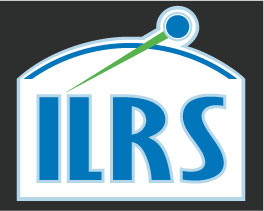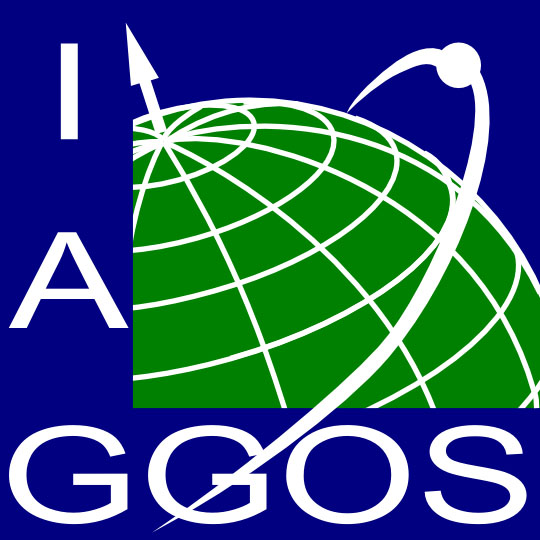Quick Links
Modeling
The model section discusses general models necessary for station operations (mount models) and models (atmospheric range correction, satellite center of mass correction,) that are required to bring raw data to level 1 data requirements.
- Telescope Mount Models
- Atmospheric Refraction
- Atmospheric Range Correction
- Satellite Center of Mass Correction
- Effective Cross Section
Telescope Mount Models
Telescope mounts designed for high precision pointing in optical or radio astronomy, laser ranging, and other precision applications generally do not point accurately enough as they arrive from the manufacturer. A great deal of effort has been spent over the years developing telescope mount models and modeling techniques. These models compensate for errors in encoder zero points, eccentricity in gears, rotors, and axles, residual misalignment of the optics and non-orthogonality of the telescope axes.
One way in which telescope mounts are modeled is to observe a number of stars and record their predicted and observed locations. These positions and their offsets are then used with a mathematical model of the mount to perform a least squares fit of the model's coefficients. The coefficients are then used in real time to convert ideal predicted coordinates into real-telescope coordinates. Usually, 30-200 stars are observed, depending on the complexity of the model.
A typical mount model for an azimuth/elevation telescope is as follows. Similar models apply to polar mounts (hour angle/declination) or alt-over-alt (X/Y) mounts.
az= az0
+ daz0
- dx*(sin(az0)*tan(el0)
- dy*(cos(az0)*tan(el0)
- do*tan(el0)
+ dm/cos(el0)
el= el0
+ del0
- dx* cos(az0)
+ dy* sin(az0)
where az, el are the refraction corrected topocentric apparent object positions;
az0 and el0 are the observed telescope axis positions;
daz0 and del0 are the encoder zero point errors;
dx and dy are the tilt of the telescope's axis with respect to the true local
topocentric coordinate system;
do is the non-orthogonality of the 2 telescope axes; and
dm is the combined tip of the telescope optics perpendicular to non-orthogonality.
Terms sin (az0) and cos (az0) can be added in the azimuth axis model, and sin(el0) and cos(el0) can be added to the elevation axis model to compensate for out-of-round problems with the telescope axis. Droop terms can also be added to compensate for telescope flexure under gravity. In addition, separate dx and dy terms can be fit for each axis to soak up other unmodeled errors.
The advantage of the creating and fitting to a physical model like the one above is that it provides physical insight into the pointing errors of a telescope. By plotting the positions of each axis versus the corresponding post-fit residual of each observation, one can often tell whether there is a term missing from the mount model and the form of the term. When that new term is inserted into the model, a new fit of the data may show a significant improvement in the RMS error of the fit. Sometimes, these plots and new terms can point to a repairable mechanical problem in the telescope and mount. An example of the latter was a steep but symmetrical error in hour angle of an astronomical telescope caused by a bolt stuck under the main mirror!
This geometric modeling technique will remove most of the low frequency effects in the major axes, depending on how the model is formulated. Higher frequency terms can often be removed by a Fourier technique in which each telescope axis is driven at 2 different rates, one to pick up the even harmonics of the periodicity and the other to pick up the odd harmonics.. This is useful for modeling errors in the interpolated bits of optical encoders. Every telescope is different, and other clever techniques may be needed to compensate for pointing errors.
There are other, numerical, fitting techniques that do not concern themselves with representing a physical model of the telescope. Such a technique is the use of spherical harmonics, in which a series of orthogonal terms are fit to the star data and kept or rejected based on some fit criteria. Another technique is to create a mesh of differences between observed and computed star positions and interpolated it in real time.
For laser ranging, modeling a telescope mount can make the difference between acquiring data from a target quickly or, possibly, not at all. A good mount model can often make an order of magnitude difference in the pointing errors, so creating a good model is well worth the effort.
Atmospheric Refraction
As anyone with experience in observational astronomy knows, the earth's atmosphere refracts a celestial object's light to an extent that requires compensation in elevation if the object is to be found in a telescope with a small observing field, especially near the horizon. The classical formula is
R = A tan z - B tan3 z
where R is the refraction correction in elevation, z is the zenith distance (90o-elevation), and A and B are empirical constants. The correction increases the apparent elevation of an object, with the amount increasing with the distance from the zenith. In addition to the elevation effect, refraction also increases the travel time of laser pulses to targets inside and outside the atmosphere.
For many decades the standard model for both laser ranging acquisition and analysts was the Marini-Murray model, published in 1973, which compensates for refraction in both elevation and range, and is accurate down to 10o elevation. More recently, the model by Mendez and Pavlis has gained prominence among laser ranging data analysts for its ability to extend high accuracy corrections down to 3o elevation with inclusion of horizontal gradients in the atmosphere.
More detail can be found on this web site at ... and in the following publications.
Marini, J. W. and Murray, C. W., 1973, Correction of laser range tracking data
for atmospheric refraction at elevations above 10 degrees," NASA-TM-X-
70555, Goddard Space Flight Center, Greenbelt, MD,
http://hdl.handle.net/2060/19740007037.
Mendes, V. B., and Pavlis, E. C., 2004, High-accuracy zenith delay prediction
at optical wavelengths," Geophys. Res. Lett., 31, L14602,
doi:10.1029/2004GL020308.
Seidelmann, P. K., ed., (1992), Explanatory Supplement to the Astronomical Almanac, (University Science Books, Mill Valley, CA), pp 140-145.
Atmospheric Range Correction
Satellite Center of Mass Correction
The equations of motion for orbiting satellites refer to the satellite center of mass; this is the point whose motion reflects the dynamics that we are trying to interpret. The retroreflector arrays are on the exterior of the satellite, sometimes decimeters and even meters away, so a correction is required to extrapolate the laser range measurements to the satellite center of mass. This correction requires very careful engineering measurements, an understanding of the size and shape of the array, properties of the corner cubes, information on satellite orientation, and properties of the ground-based systems (pulse energy, pulse width, wavelength, receiver characteristics, etc.)
Some ground-based systems, typically those powerful enough to operate at multiphoton return levels, use detectors (e.g. photomultipliers) that “see” the entire return signal shape that is then discriminated at some level to close the range measurement. These measurements are then based on the full return signal shape and have some depth into the satellite.
Many of the newer ranging systems use Single Photon Avalanche Photon Detectors (SPAD), which stop with the first return photon. Measurements with these systems tend to be biased more toward the front of the satellites.
Satellite center of mass corrections must be available to treat the different configurations presently in use.
Effective Cross Section
The effective cross section for each satellite array is computed from the properties of the array and the corner cubes.




